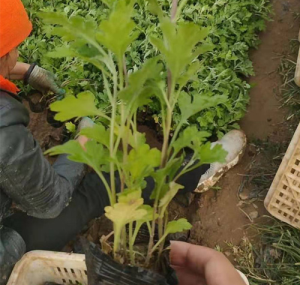Ground cover chrysanthemum characteristics
The chrysanthemum variety group with high garden application value cultivated by the ground cover chrysanthemum series has the advantages of low plant height, compact plant type, rich color, many flowers, long flowering period, strong resistance to stress, extensive management and so on. It is suitable to be used as ground cover plants in many green areas such as squares, streets, parks, scenic spots, residential areas and so on. It is colorful and colorful, and it should form large blocks to show the beauty of the group. There are many existing 20 varieties, which are suitable for open field cultivation, and can also be used for wintering in open areas in the north. It is an important ornamental plant in urban landscaping.
feature
The ground cover chrysanthemum is a perennial perennial herb. It is a short-day plant. It forms flower buds in 8 ~ 9 months and blooms successively (the natural flowering period of most varieties is 9 ~ {{{{6 }}}}month). The root system is developed, the adventitious roots regenerate each year, new individuals germinate, the foliage is lush, and the shape is plump. The leaves are single leaves alternate, each node-piece, the leaves are oval or oblong, the edges are notched or serrated, the base is heart-shaped, and the leaves are hairy. Usually-the first season of the year, the beginning of autumn flowers, blooming 3 cm ~ 5 cm small flowers, solitary or clustered, the branches are densely clustered, and the flowers are like flowers. The plant height is 3 0cm ~ 40 cm, and the crown of a single plant is 3 0cm ~ {{3}} 0cm or more. The main colors are yellow, white, red, purple, pink, orange, brown and variegated.
characteristic
The ground cover chrysanthemum is mostly a distant hybrid of chrysanthemum and wild chrysanthemum, so it is more resistant to stress than the general chrysanthemum. It is resistant to cold and drought, diseases and insect pests, half shade, barren soil, and salt and alkali. It is also resistant to pollution and extensive management. Most varieties can withstand the severe cold at -20 ° C ~ -30 ° C, and can overwinter in the open ground in the three north areas; drought resistance is not resistant to waterlogging, except for two permeable watering during planting, after survival, it is generally not necessary to water, because of fear of waterlogging , So it should be planted in a place with good drainage, resistant to diseases and insect pests, from colonization to flowering


